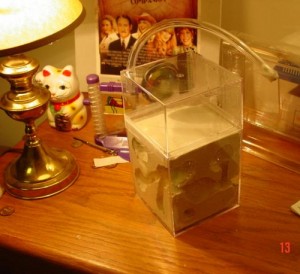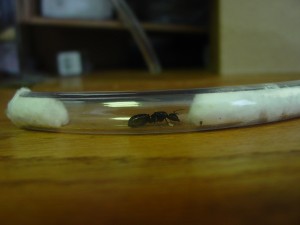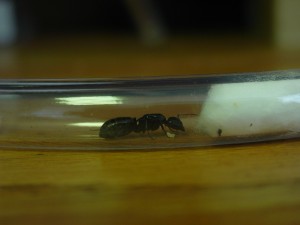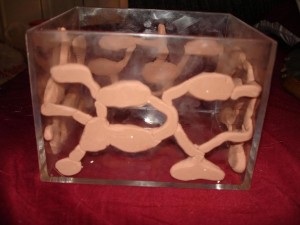After attending the season ending of the Harrisburg Symphony Orchestra, grabbing a bite at Harrisburg’s best sushi joint (props to my other favorite though, which is much less expensive), and heading home, my girlfriend pointed out “there’s a HUGE ant in the corner by the front door.”
It was this time last year that my almost successful attempt at rearing an ant colony in a plaster-cast formicarium failed. Since then, other projects have taken precedence, and all my equipment (test-tubes, tubing, home-made asperators, numerous containers, etc…) have been packed away in the basement). I immediately ran downstairs and grabbed out the first container and spool of tubing I could find.

I’m still not entirely sure what killed off the last colony – only 2 ants hatched prior to them all being found dead. There’s a couple likely possibilities: I fed them a few pieces of birdseed – learning later that some birdseed contains pesticide; there may have been a lack of oxygen in the formicarium (I was hoping the large amount of evaporating water would provide an ample amount of oxygen), the clay used to form the chambers in the formicarium possibly contained sulphur….
So, I’m picking up and starting all over. The gang at antfarm.yuku.com have put together a great forum on ant care, building formicariums, general tips – AND they do ant identifications.


After providing the pictures and a brief description – it appears this may be Camponotus Pennsylvanicus. (I believe that’s a carpenter ant). Not exactly the best thing to have in one’s house, but I’ve seen no visible wood damage anywhere.
Instead of re-using the former plaster-cast nest, I’m starting over. The plastic box is readily available at the local Michaels Arts and Crafts Store, I purchased 3 initially, so I have another one laying around. To form the chambers in your formicarium, you simply apply clay to the walls. After filling the enclosure with plaster of paris and allowing time for it to dry, you pull the cast out of the box and remove the clay.

My former nest (see the topmost picture) had a drilled hole to allow for application of water at the base. The top portion (the lid) of the nest had a thermometer and humidity meter. I also had a connector tube allowing me to connect the formicarium to a food scavenging area. The nest itself had many wraparound tunnels going around each side.
My current plans are to keep the exact same idea, although use deeper chambers. Honestly, I couldn’t have been happier with the former nest, but I’d rather not risk the possibility of contamination.
I’ll post pictures of the new build in the coming week. In the meantime take a look at this video of ants farming aphids.
